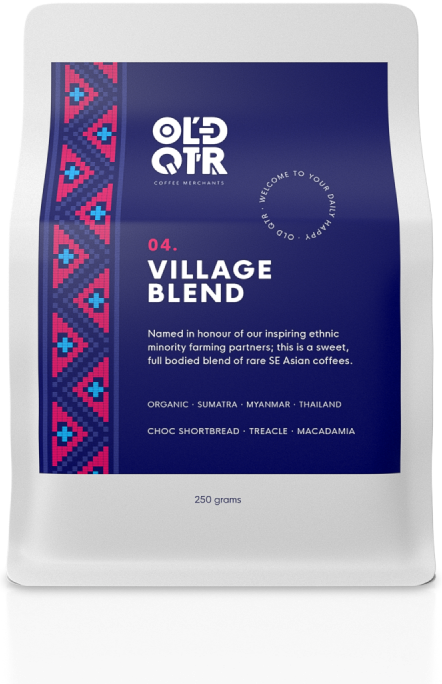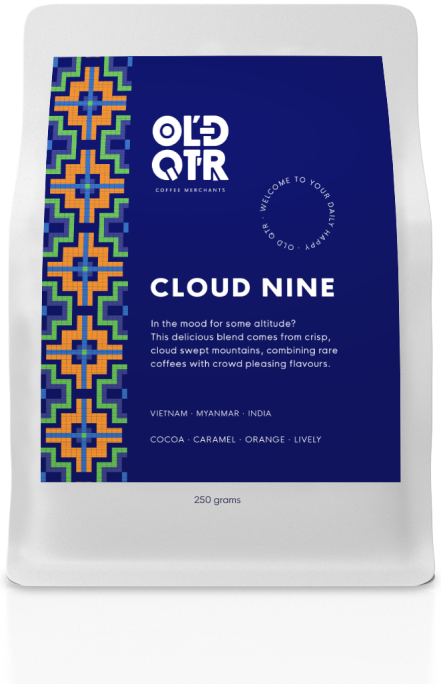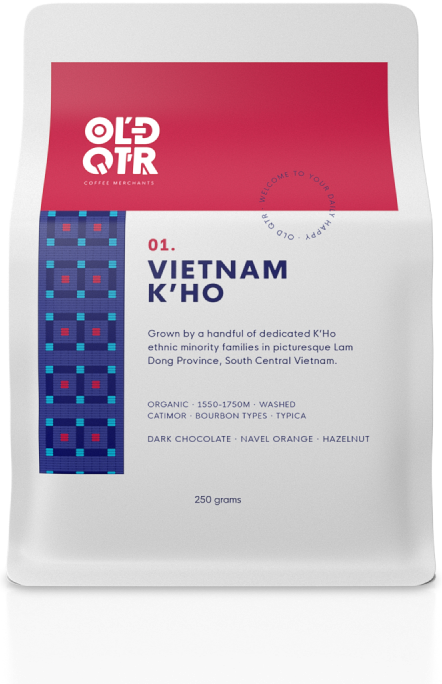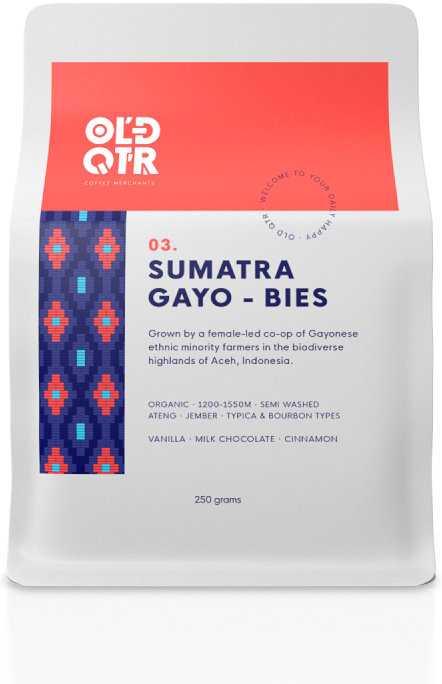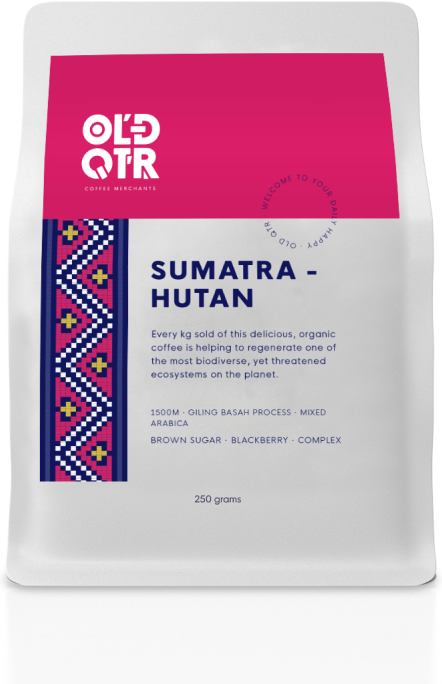Learn How to Read & Understand a Specialty Coffee Label Like A Pro
More and more consumers are choosing specialty coffee over supermarket brands, but we understand that the information and vocab of speciality coffee can be confusing at first.
We’ve put together this comprehensive guide designed to help you understand the information commonly found on a coffee label, covering everything from varieties to processing methods and tasting notes.
Understanding the terminology will not only help you find a coffee you love, but it will also introduce you to the people, place and processes involved in giving it its own, unique flavour profile.
Altitude
Altitude, or elevation, refers to how high the coffee farm is above sea level, and it has a significant influence on the microclimate and growing conditions in a region. Altitude and climatic factors consequently have an important influence on the properties and flavour of both the fruit and bean. Higher altitudes can give coffee cherries more time to develop, leading to more complex and sweeter tasting beans.

However, it’s not quite as simple as one elevation being better, or the ‘highest altitude possible is always best’. The specific region coffee is grown in will determine the optimal elevation to grow coffee. For example, latitude (how far away the farms are from the equator) influences what the ideal altitude will be.
The closer a farm is to the equator, the more the coffee will benefit from higher altitude. Conversely in places further away from the equator (such as Northern Thailand or parts of Brazil), coffee will struggle to grow above 1500m, and perhaps in this case coffee grown closer to 1000m is potentially better.
Finally, the presence of shade trees on a farm will also help provide some of the benefits the altitude brings. A good starting place is to go for Arabica grown at an altitude of 800-1000m above sea level or more, but always keep an open mind to explore what you like best.

Processing Method
What we call coffee ‘beans’ are the seed of the coffee fruit. It’s also worth noting that the coffee fruit is also often referred to as a ‘cherry’. After the cherries are harvested off the tree, the coffee goes through a series of processing techniques which influence how the coffee will taste. The three main processing methods are:
Washed: Ripe cherries are picked, then pulped and fermented for a certain amount of hours or days before the fruit mucilage is removed from the coffee parchment by using water. The parchment (a husk containing the beans) is then dried to certain moisture content, generally between 10-12% before being dry-milled into green bean form. This approach often yields cleaner tasting coffees, that most people enjoy.
Dry/Natural: Ripe cherries are picked. The coffee then may or may not go through an initial fermentation depending on the producer’s chosen technique. Nonetheless, the main difference is that the coffee cherry is slowly dried while still in the fruit. Once the dried cherries reach their desired moisture content, the fruit and parchment are then both dry-milled leaving the green bean. This process uses less water than the washed method and encourages a different diversity of yeast and bacteria species. It can result in more full-bodied, sweet, fruity tasting coffee. Coffee’s using unique natural processing have become more popular recently. It worth noting that natural coffees can be favourites for some but for others they can also be more polarising especially if they are super fruity, funky or fermented.

Honey: Ripe cherries are picked, then de-pulped, then dried with a thin layer of sticky, golden fruit mucilage coating the parchment, that resembles honey (hence the name). As with naturals, there may or may not be an additional fermentation added depending on the goal of the producer. Once the coffee is dried to its desired moisture content, the colourful-looking parchment will then be dry-milled to access the green bean. Like Natural processing, the honey method saves on water usage during processing. In terms of flavour honey coffees will often have a more body with a unique complexity and sweetness.
This is a basic guide, but the best way to learn about the effects of different processing methods is to try them out!
Species & Varieties
There are two main species of coffee that people consume, Arabica and Robusta. Within those two families there are multiple different varieties of coffee plants, and they each have unique genetics, flavours and attributes. Most of the specialty coffee we drink in Australia is of the Arabica species, that said the fine Robusta movement is now on the rise. Occasionally, you might come across Liberica as well.
The species and variety of coffee will have a big impact on the look of the trees, the shape of the fruit and on the ideal growing conditions, consequently affecting the kind of flavour you’ll be left with at the end. A good way to think of variety is in terms of potential.

Each variety will share some certain foundational flavour attributes, but we need to add good farming and processing practices to the equation, for that potential to be fully realised. Each coffee variety is truly unique, and specialty coffee is all about bringing out this uniqueness and helping consumers to understand and discover their favourites.
Some examples of different Arabica varieties are Bourbon, Typica or Geisha (among hundreds more and counting). We also now have hybrids, which have a massive place in the volatile future of coffee agriculture, Hybrids such as Catimor contain a small amount of Robusta genetics that make the plant hardier and disease resistant.
There is currently a lot of work being done to combine disease and climate resistant varieties with those that have exceptional cup profiles that may be more vulnerable. This ensures farmers can keep producing amazing coffees in the face of climate change and diseases like coffee leaf rust.
Tasting Notes
As we’ve discussed, there are so many factors influencing the flavours we end up with in a cup of coffee. The tasting notes on your specialty coffee label act as a rough guide to help you pick a coffee based on how these factors come together to form a flavour profile.
When we’re cupping coffee at Old Quarter, we’re evaluate things like acidity, sweetness, body, aroma, and aftertaste. These components come together in a way that might remind us of a certain familiar flavour or aroma e.g. a type of fruit, confectionery, or citrus.

For example, our Myanmar Danu (a natural processed coffee) has tasting notes of red berries, red apple, candy, and milk chocolate. These red fruit flavours have a lot to do with the processing method.
Another example you might find on a label of washed coffee is a type of citrus fruit, this is because of the way the acidity (often more citric) meets with the sweetness to give us an impression of say lemon or orange.
It’s important to note that tasting notes offer a rough, broad guideline for people to follow when they’re buying coffee, but of course they are only a guide, not a rule. Some may perceive the flavours in coffee differently to others, so it’s important to look to the tasting notes with an open mind, and to remain curious!
Origin
Coffee grows in several different countries within a certain distance to the equator, often referred to as the coffee belt. There are key growing regions within Africa, Asia, Central and South America. Each growing region has its own unique soil, altitude, mix of varieties and microclimate, all of which has significant impact on how the coffee grows and the flavours which are produced.
The country of origin listed on your coffee label indicates where your coffee has come from and invites you to dig a little deeper and explore what’s going on within that region.

For example, in Thailand, there is a lot of experimentation going on within the coffee industry, and we’re seeing some fantastic coffees and flavour profiles coming out of there that are unique to that region and those growers. Even though there is thriving sophisticated domestic industry in Thailand, it’s still not a well-known origin internationally.
It is also important to note that a single origin coffee refers to coffee that comes from a specific region or farm, while a blend is a mixture of two or more coffees from different farms, or countries, chosen by the roaster to optimise their flavour and aroma.
There is a lot of information on your speciality coffee label, and we hope this guide has helped to demystify a few of the terms and references. At Old Quarter we’re always happy to help when it comes to choosing the best coffee for you – we love talking about coffee almost as much as we love drinking it!








